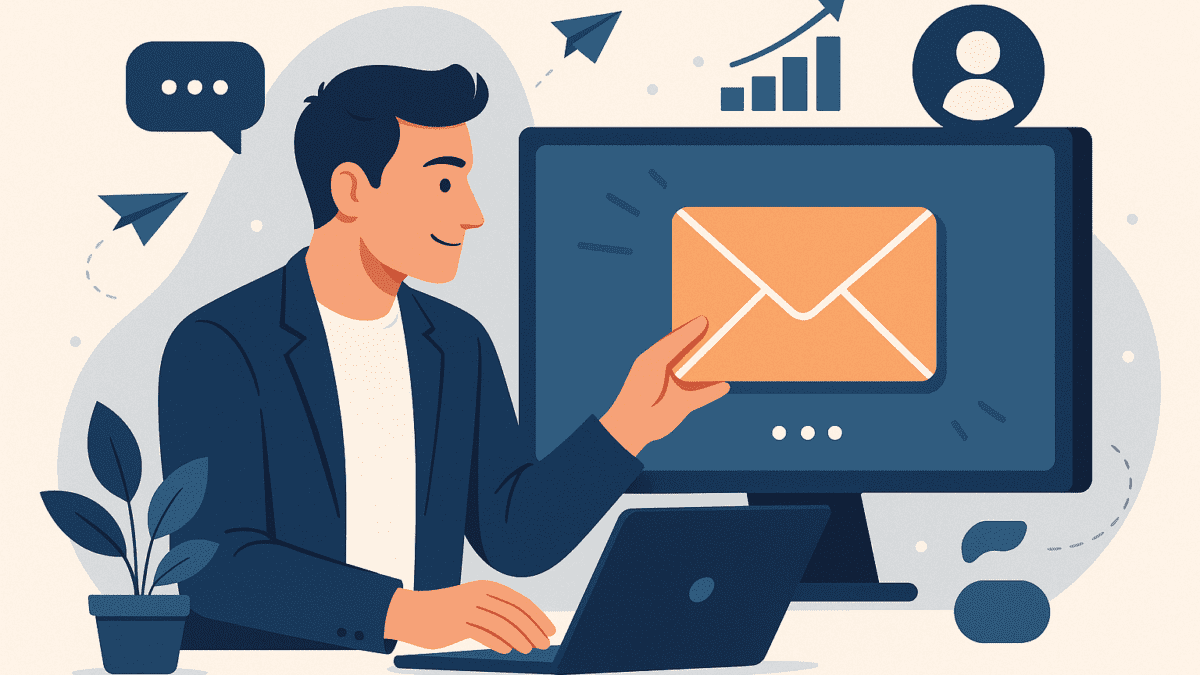The Power of Email Marketing in 2025: Why It’s Still the King of B2B Engagement
Table of Contents
Introduction
In an era dominated by AI, social media ads, and short-form video, you might think email marketing has lost its edge. But the truth? Email marketing in 2025 is stronger than ever. With personalization powered by AI, automation at scale, and improved analytics, email remains the most cost-effective and conversion-driven channel for B2B marketers.
According to HubSpot, email generates $36 for every $1 spent — making it one of the highest-ROI marketing tactics. For businesses aiming to nurture leads, build trust, and drive revenue, email marketing isn’t just relevant — it’s essential.
Why Email Marketing Is Thriving in 2025
- Hyper-Personalization at Scale: AI-driven platforms now analyze browsing history, purchase intent, and firmographic data to create highly personalized campaigns. Instead of generic blasts, your leads receive relevant content tailored to their industry, role, or pain points.
- Integration with B2B Lead Generation: Email is no longer standalone. It seamlessly integrates with B2B Content Syndication Services and CRM platforms, ensuring leads captured through whitepapers or webinars are nurtured automatically with personalized email flows.
- Stronger Trust with Privacy-First Marketing: With the rise of GDPR and India’s DPDP Act, email gives marketers a consent-first channel to engage with audiences. Unlike third-party cookies, email addresses are first-party data, ensuring compliance and higher quality engagement.
- Interactive Email Experiences: From embedded polls to mini product demos, emails are becoming more dynamic and engaging. Brands are using video snippets, carousels, and interactive CTAs directly inside emails to increase click-through rates.
- Unmatched ROI and Measurability: Marketers can track open rates, click-throughs, conversions, and revenue attribution in real time. Combined with AI predictions, email helps sales teams focus on leads most likely to convert.
Key Email Marketing Strategies for B2B Success
- Segment Your Audience: Not every prospect is the same. Segmenting by industry, job role, company size, or funnel stage ensures your emails resonate with specific pain points.
- Automate Lead Nurturing: Use drip campaigns to warm up cold leads or re-engage inactive contacts. AI tools can determine the best time and frequency to send for maximum impact.
- Leverage Value-Driven Content: Emails shouldn’t just sell — they should educate and nurture. Whitepapers, case studies, and blog links help position your brand as a trusted thought leader. Check out WhitepapersOnline Lead Generation as an excellent integration.
- A/B Test Beyond Subject Lines: In 2025, smart marketers test everything: design layouts, CTAs, content length, and even sending times. Predictive AI tools now make A/B testing faster and more precise.
- Optimize for Mobile and Accessibility: Over 70% of B2B emails are opened on smartphones. Ensuring responsive design, accessible fonts, and quick-loading visuals is non-negotiable.
Future Trends to Watch
- AI-Generated Emails: Tools like ChatGPT are already automating drafts. Expect hyper-targeted, auto-personalized email campaigns.
- Voice-Activated Emails: Integration with smart assistants for hands-free engagement.
- Predictive Lead Engagement: AI will soon recommend the exact content that nudges a prospect closer to conversion.
Conclusion
Email marketing isn’t just surviving — it’s evolving into the ultimate B2B conversion tool. From nurturing high-intent leads to driving direct sales, it remains at the heart of any effective digital marketing strategy.
If your business isn’t doubling down on email in 2025, you’re leaving money — and leads — on the table.





